Click on images to enlarge
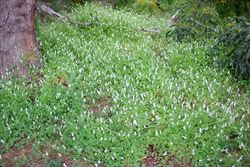
infestation (Photo: Sheldon Navie)
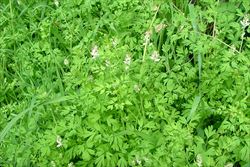
habit (Photo: Sheldon Navie)
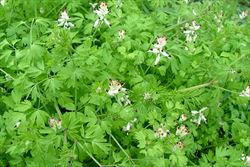
leaves and flower clusters (Photo: Sheldon Navie)
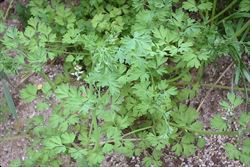
deeply-divided leaves (Photo: Sheldon Navie)
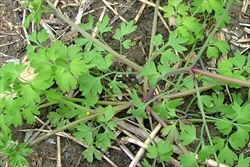
close-up of stems and leaves (Photo: Sheldon Navie)

flower cluster (Photo: Sheldon Navie)
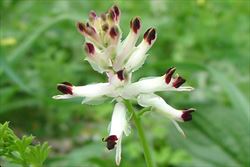
close-up of flowers (Photo: Sheldon Navie)
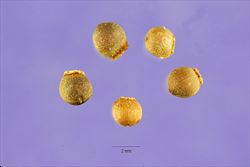
close-up of seeds (Photo: Jose Hernandez at USDA PLANTS Database)
Scientific Name
Fumaria capreolata L.
Synonyms
Fumaria capreolata L. subsp. capreolataFumaria officinalis L. var. capreolata (L.) Ewart
Family
Fumariaceae (Western Australia, New South Wales, the ACT, Victoria, Tasmania, South Australia and the Northern Territory)Papaveraceae (Queensland)
Common Names
climbing fumitory, fumitory, rampant fumitory, ramping fumitory, white fumitory, white ramping fumitory, white ramping-fumitory, whiteflower fumitory, white-flowered fumitory
Origin
Native to northern Africa (i.e. northern Algeria, northern Egypt, northern Libya, Morocco and Tunisia), the Azores, the Canary Islands, western and southern Europe (i.e. Ireland, the UK, Belgium, Switzerland, France, Portugal, Spain, Albania, Greece, Italy and southern Yugoslavia) and western Asia.
Naturalised Distribution
Widely naturalised and common in southern Australia (i.e. in New South Wales, Victoria, many parts of South Australia and south-western Western Australia). Also occasionally naturalised in the cooler districts of south-eastern Queensland.
Notes
Climbing fumitory (Fumaria capreolata) is regarded as an environmental weed in South Australia, Victoria and Western Australia. Unlike all of the other fumitory species (Fumaria spp.) in Australia, which are primarily weeds of crops and agricultural areas, this species is mainly a weed of creekbanks and riparian areas, urban bushland, coastal sites, open woodlands, gardens, roadsides, disturbed sites and waste areas. It prefers partially shady, wetter, habitats where it can form a dense ground cover and may also climb up over lower-growing vegetation.
In Victoria, climbing fumitory (Fumaria capreolata) is seen as a potential risk to one or more native plant communities. It is naturalised in native vegetation, but is currently thought to be causing minimal disruption to ecological processes or losses to biodiversity. It appears on some local and regional environmental weed lists (e.g. in Knox City and in the Angahook-Otway region) and has been recorded growing in
In Western Australia, climbing fumitory (Fumaria capreolata) is mainly associated with settlements from Mullewa to
Climbing fumitory (Fumaria capreolata) is also common in riparian areas in New South Wales and is present in numerous conservation areas in South Australia (e.g. Ferguson Conservation Park, Kenneth Stirling Conservation Park, Sturt Gorge Recreation Park, Cleland Conservation Park, Brownhill Creek Recreation Park, Belair National Park, Morialta Conservation Park, Cudlee Creek Conservation Park and

